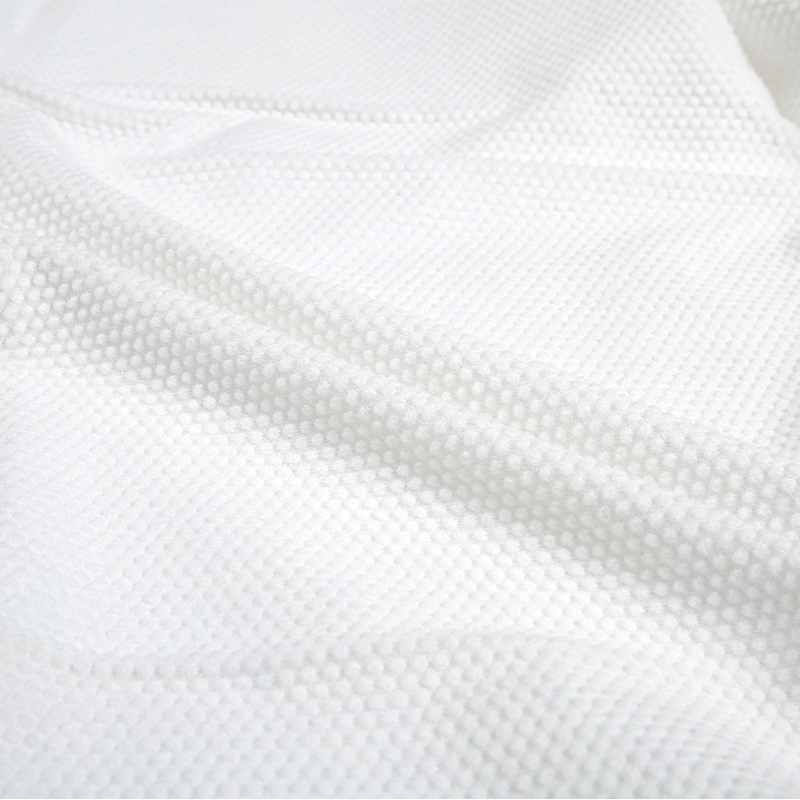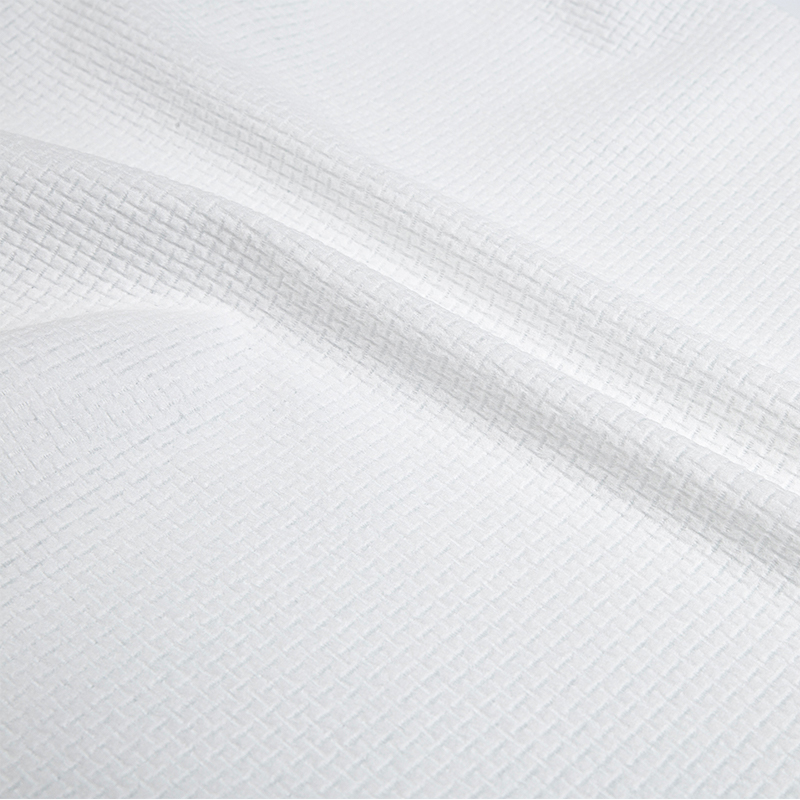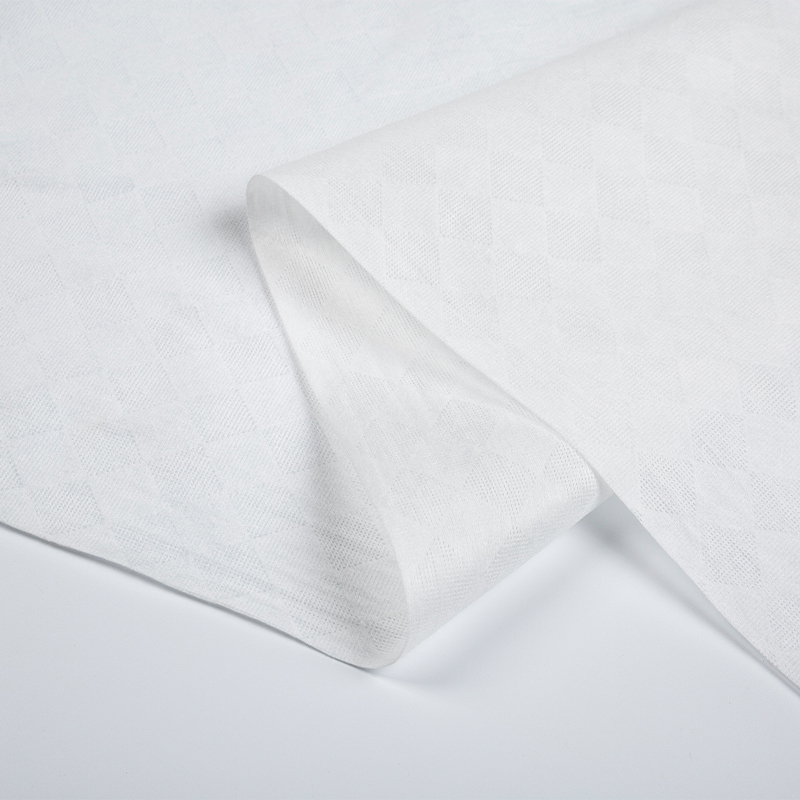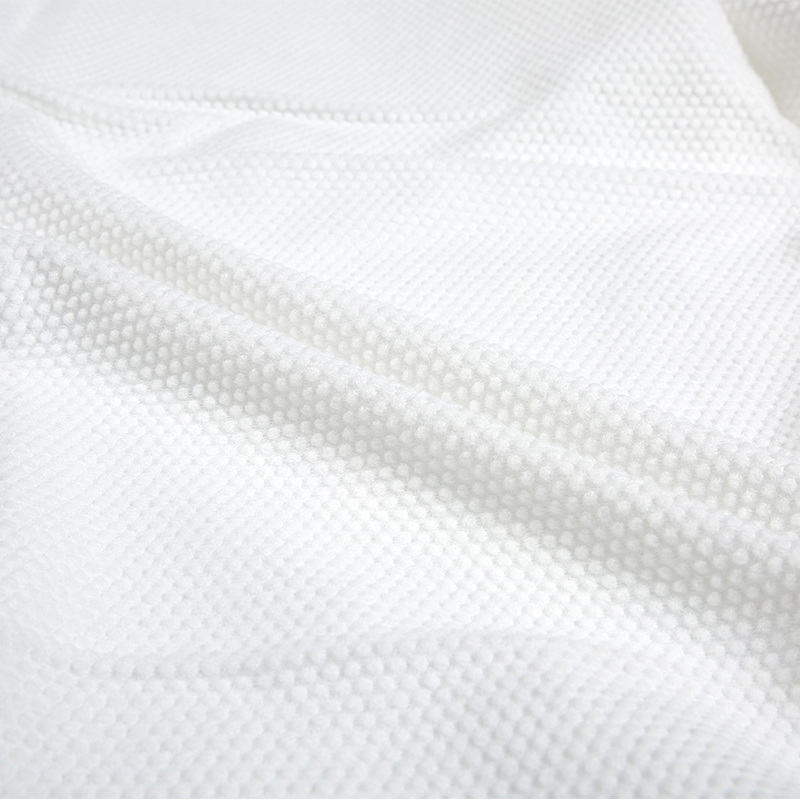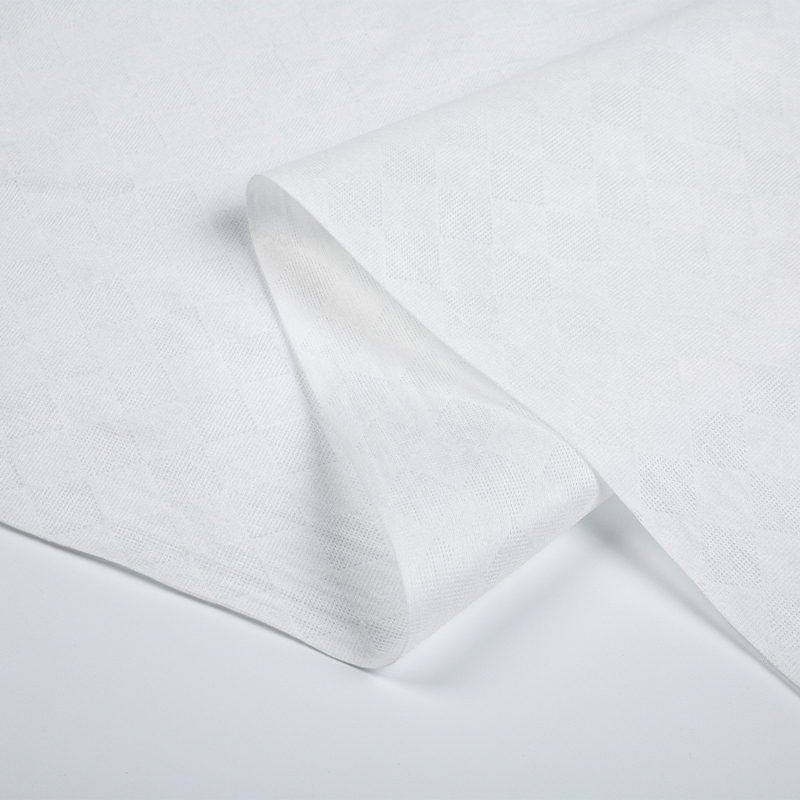Founded in 2022, Hangzhou Shunlong Nonwovens Technology Co., Ltd. is a professional China nonwoven fabric manufacturer and non-woven raw material factory
1. Production process and material sources
Spunlace Nonwoven Fabric is formed by combining fiber webs with high-pressure water jets. In this process, cotton, linen, silk, wool and other raw materials are broken into fibers, and then under the action of high-pressure water flow, the fiber bundles are processed into non-woven fabrics. This process makes the spunlace non-woven fabric have the characteristics of tight fiber web structure and high strength. Traditional textiles rely on complex textile processes, including spinning, weaving, dyeing, embroidery and other links. Spinning is the process of processing fiber raw materials into yarn, while weaving is the process of criss-crossing yarn into cloth. Subsequently, the cloth needs to undergo subsequent processing such as dyeing, printing, and embroidery to increase its beauty and practicality. These links require highly sophisticated manual operations or advanced machinery and equipment to ensure the quality of the final product.
2. Structure and performance
In terms of structure and performance, Spunlace Nonwoven Fabric has significant advantages. Its fiber web structure is tight, making the spunlaced non-woven fabric have high strength, high water absorption and good filtration performance. In addition, spunlaced non-woven fabrics are soft, breathable, and easy to decompose. These characteristics make them widely used in medical supplies, cosmetic cotton, cleansing wipes and other fields. Although traditional textiles also have good air permeability and moisture absorption, they are relatively loose in structure and have low strength. In addition, the water absorption and filtration properties of traditional textiles are also relatively low, which limits their application in certain fields.
3. Production efficiency and cost
From the perspective of production efficiency and cost, the production process of Spunlace Nonwoven Fabric is simpler and faster, with short production cycle, high output and low cost. This is because the production process of spunlaced non-woven fabrics does not require complicated steps such as spinning and weaving of raw materials. It only needs to arrange the fibers in a network and combine them through high-pressure water jets. The production process of traditional textiles is relatively complex and requires multiple links, each of which requires a high degree of skill and experience. This not only increases production costs, but also reduces production efficiency.
4. Environmental protection and sustainability
Spunlace Nonwoven Fabric also excels when it comes to environmental protection and sustainability. The production process of spunlace nonwovens is more environmentally friendly. It does not use any chemical additives during the manufacturing process and relies solely on high-pressure water flow to loosen and interweave the fibers, so no harmful chemicals are released into the environment. In contrast, the production of traditional textiles usually involves the use of a large number of chemicals, such as dyes, auxiliaries, etc., which may cause environmental pollution during production and processing. Spunlace nonwovens are more sustainable. Because its production process is relatively simple and does not require complex links such as spinning and weaving, it can save a lot of energy and water resources. At the same time, the raw materials of spunlace non-woven fabrics come from a wide range of sources, including recycled fibers and bio-based fibers. The renewable nature of these raw materials further improves their sustainability. Spunlaced non-woven fabrics also have good degradability. After being discarded, it can quickly decompose in the natural environment and will not cause long-term pollution to soil and water sources. In contrast, traditional textiles are often difficult to degrade due to their complex structures and chemical treatments, and have a greater negative impact on the environment.
Spunlace Nonwoven Fabric is significantly different from traditional textiles in terms of production process, material sources, structure and performance, production efficiency and cost, as well as environmental protection and sustainability. These differences make spunlace nonwovens have broad application prospects in medical, health, environmental protection and other fields.
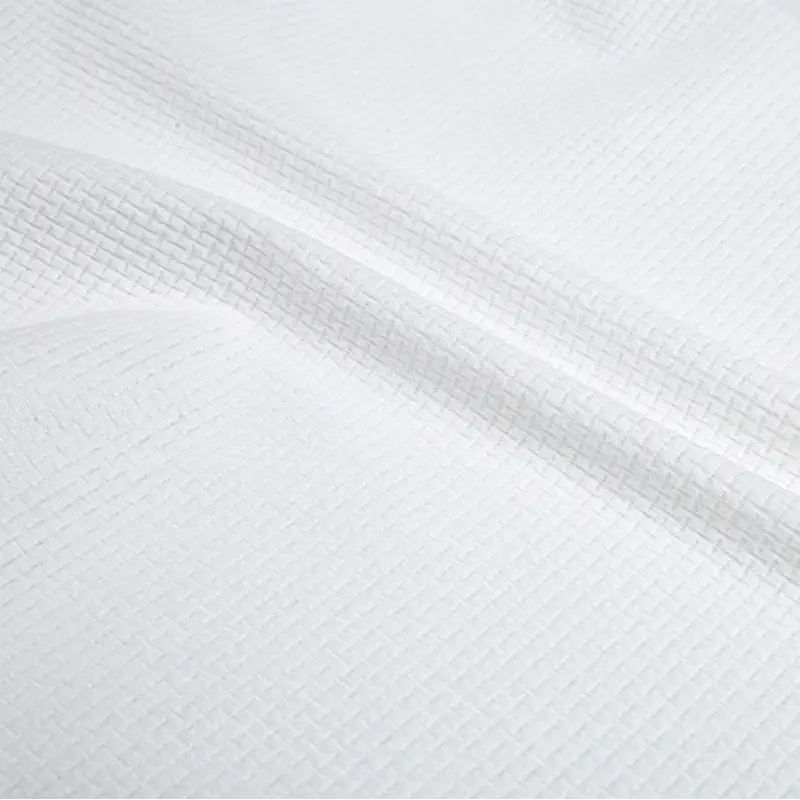

 English
English 日本語
日本語 русский
русский Español
Español